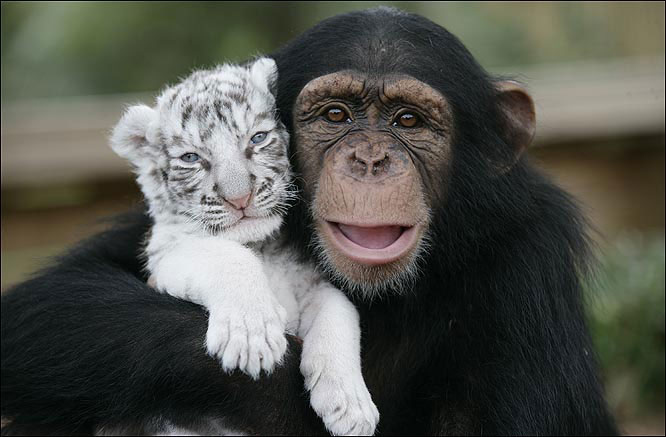Source(google.com.pk)
 Amazing Animal Pictures
Amazing Animal Pictures
 Amazing Animal Pictures
Amazing Animal Pictures
 Amazing Animal Pictures
Amazing Animal Pictures
 Amazing Animal Pictures
Amazing Animal Pictures
 Amazing Animal Pictures
Amazing Animal Pictures

Amazing Animal Pictures
 Amazing Animal Pictures
Amazing Animal Pictures
 Amazing Animal Pictures
Amazing Animal Pictures
 Amazing Animal Pictures
Amazing Animal Pictures
 Amazing Animal Pictures
Amazing Animal Pictures
 Amazing Animal Pictures
Amazing Animal Pictures
Amazing Animal Pictures Biography
At this point, it's pretty clear that animals are by far the best photobombers out there (for proof, just check out our Twitter avatar). It's been a while since we rounded up the best animal photobombs, but rest assured: the animal kingdom has been hard at work ruining people's pictures (or making them way, way better, which is the way we prefer to look at it).
Check out these 45 amazing animal photobombs, from the likes of dogs, cats, llamas, sharks, dolphins and more. Vote for your favorites and send us your best pet photobombs to be included in our next slideshow.Mammals (Mammalia) are vertebrates that have hair, a four-chambered heart and mammary glands. Mammals first appeared about 200 million years ago during the Jurassic Period. Today, there are roughly 5,400 living species of mammals that are remarkably diverse in size, form and adaptations. They inhabit every continent and have colonized a wide variety of niches including grasslands, wetlands, scrublands, seas and oceans, below ground, forests, mountaintops, polar regions and deserts.
Mammals range in size from the minute bumblebee bat which measures a mere three centimeters in length, to the magnificent blue whale, which can measure 33 meters head to tail—at such immense dimension, it is without doubt, the largest animal alive today.
Although mammals are diverse in form, they do share some unique characteristics. The defining characteristic of mammals is that their lower jaw bone which carries the teeth (and is thus referred to as the dentary bone) attaches directly to the skull. In other vertebrates, the dentary is one of multiple bones in the jaw and does not attach directly to the skull.
Mammals also have a unique arrangement of three bones (the incus, malleus and stapes) in the middle ear. These bones transform sound vibrations into neural impulses. Two of these bones, the incus and malleus, originated as bones within the jaw.
Another skeletal characteristic unique to mammals is that they have two knobs on the base of the skull (known as a double occipital condyle) which serve to seat the skull in the top neck vertebra. In other vertebrates, the base of the skull has a single knob.
Hair is also unique to mammals—no other animals possess true hair and all mammals have hair covering at least part of their body at some time during their life. Hair grows from skin cells known as follicles. The hair shaft is made of a protein called keratin. Hair serves numerous functions.
When present as a thick covering over the animal's body (known as pelage), hair provides superb insulation. The pelage of most mammals is a mosaic of different kinds of individual hairs such as guard hairs, barbs, bristles, awns, underfur, wool, fur, and velli. Each of type of hair has a different structure and serves a slightly different purpose.
The adaptive benefits of mammalian hair are numerous. Hair provides insulation from extreme cold, enabling mammals to inhabit some of the harshest habitats on Earth. It also provides mammals with protection for their skin from abrasions and damaging UV rays. Many mammals have pelage that is colored or patterned in a way that helps to conceal them from predators or, in some cases, prey.
Mammals nurse their young with milk produced by mammary glands. Mammary glands, like hair, is a uniquely mammalian trait. Though present in both males and females, mammary glands only fully develop in females. Mammary glands consist of ducts and glandular tissues that secrete milk through nipples. Young mammals obtain milk from their mother by feeding from her nipples. The milk provides the young with much needed protein, sugars, fat, vitamins and salts.
Mammals having a diaphram, a four-chambered heart and a large cereberal cortex. Additionally, some mammals hibernate during time periods when resources are scarce, such as during the winter season.
Mammals are one of the six basic groups of animals.
There are twenty-one subgroups of mammals including aardvarks, anteaters, bats, carnivores, cetaceans, elephant shrews, flying lemurs, hares, rabbits and pikas, even-toed hoofed mammals, odd-toed hoofed mammals, hyraxes, insectivores, marsupials, monotremes, pangolins, primates, rodents, seals and sea lions, sirenians and tree shrews.
Evolution:
Mammals first appeared about 200 million years ago during the Jurassic Period. The earliest of mammals were small, shrew-like creatures that hunted for insects under the safe cover of darkness. For 130 million years, mammals remained small and survived at the margins of a world ruled by reptiles, most notably, the dinosaurs. But then about 65 million years ago a cataclysmic shift took place. The climate changed and the dinosaurs died-out, along with nearly two-thirds of all animal life. This left vast habitats wide open for colonization. Mammals, who survived the climate shift thanks in part to their ability to regulate their own body temperatures, expanded, multiplied and diversified.
Amazing Animal Pictures










No comments:
Post a Comment